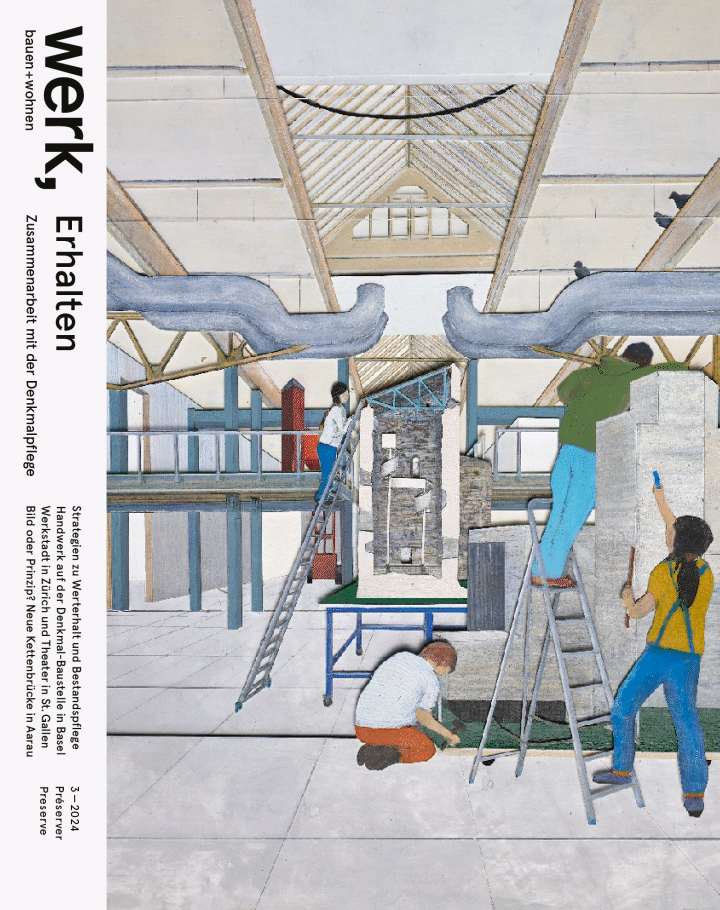werk, bauen + wohnen 3–2024

The Stones of Venice
In a world which, although faced with an ecological crisis, nevertheless continues uninhibitedly to focus on growth and progress, thinking about conservation seems anachronistic and yet obvious. John Ruskin (1819 – 1900) who, con fronted with the growth of industrialization in the nineteenth century, became a convinced defender of existing values, must have experienced something similar. An aesthete and keen observer of the age he lived in, he saw in the technical development of the landscape and the decay of historic cities the loss of the foundations of architecture. “Venice is quickly dissolving, like a piece of sugar in a cup of tea!” he noted, and in his precise drawings began to record obsessively that which he believed was destined to decay. In 1853 he put his theoretical reflections on paper in The Stones of Venice, a work that was to become a basis of modern conservation theory.
Today Ruskin’s relevance for our world is to be found primarily in that area of his thought that extended beyond the boundaries of the individual disciplines he represented — for him conservation was a social project. And today conservation is still most successful if cultural, ecological, and economic issues are considered together, rather than being played off against each other. Therefore, cooperation with the conservationists is a central theme of this issue, which shows that to bring historic building stock into the future lastingly the collaboration of all involved, and negotiations between interests are of primary importance.
The Werkstadt site of the SBB in the west of Zurich, demonstrates this principle at an urban planning scale; here existing building stock is not to be adapted to suit the func tion but the other way around. At a smaller scale, the same principle is illustrated by a romantic ruined castle in the Bündner Herrschaft, where a local initiative supported the conservation efforts. For this issue we found our “Stones of Venice” in St Gallen, where Claude Paillard’s theatre, a building that uses a powerful concrete idiom, was renovated and extended, and, equally, during our visit to a building site in Basel. There an experienced team of experts has breathed a second life into a parish centre by — very much in Ruskin’s sense — paying great attention to handcraft. — Lucia Gratz, Christoph Ramisch